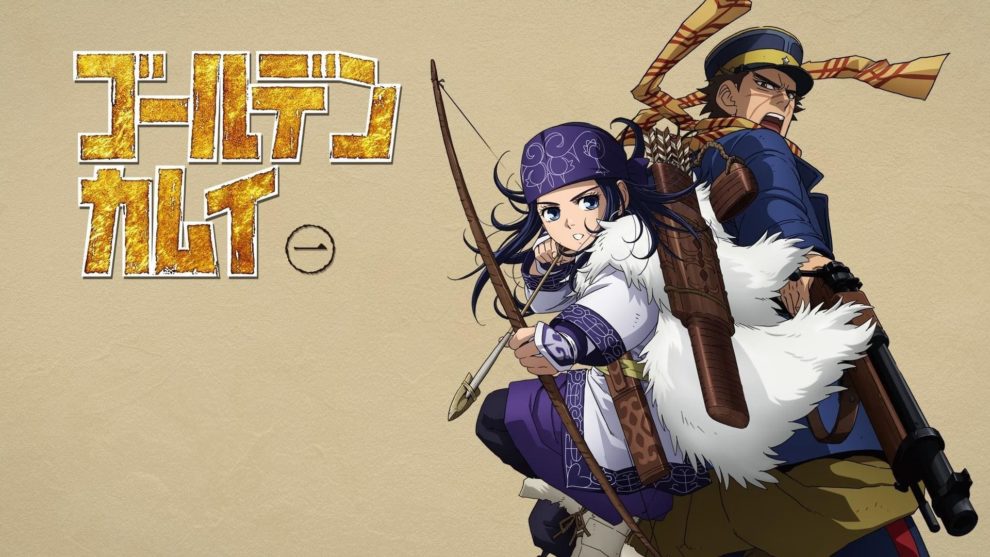Based on the homonymous, multi-awarded manga by Satoru Noda, which has already sold more than 18 million copies, “Golden Kamuy” is a rather different shonen title, which stands out by focusing on an Ainu character, while highlighting the language, culture, and customs of the indigenous people, supervised by Hiroshi Nakagawa, an Ainu language linguist from Chiba University.
Buy This Title
Saichi Sugimoto (nicknamed “Immortal Sugimoto” for escaping death multiple times but also for his savage fighting style), a veteran of the Battle of 203 Hill in the Russo-Japanese War, works as a miner in Hokkaido in order to provide for the widow of his dead comrade. He hears a dubious story about a hidden trove of Ainu gold, the location of which is hidden in the tattoos of a group of convicts who escaped from Abashiri Prison. When he discovers that the story is true, and that multiple other groups are in pursuit of the gold, he decides to search for it. Asirpa, a young Ainu girl, saves Sugimoto from being eaten by a bear and they partner up to search for the gold together, as the girl's father seems to have been involved in the case.
As the two travel together, Asirpa introduces Sugimoto (and the audience essentially) to the Ainu ways, as they meet various foes and friends while searching for the treasure, with Yoshitake, a tattooed Abashiri convict and master escape artist also joining them eventually. Their path however, is anything but easy, since two different factions also seem to be hunting for the treasure. The 7th Division, the most fearful one in the Japanese Army, headed by the sociopath first lieutenant, Tokushiro Tsurumi, seeks to use the Ainu gold to lead a coup d'état to form an independent Hokkaido. Toshizo Hijikata, former leader of the Shinshengumi, plans to use the gold to fund the secession of Hokkaido and creation of a second Republic of Ezo, and has already signed up Shinpachi Nagakura, another Shinshengumi captain and Tatsuuma Ushiyama, a rather fearful judoka.
Evidently, the “loans” from other samurai anime are more than evident, with Sugimoto sharing many similarities with Manji from “Blade of the Immortal“, Tsurumi with Shishio from “Samurai X“, while Hijikata has been a recurring persona in a number of similar titles. The same can be said for the overall narrative, which switches from dramatic and brutal action sequences to humorous ones, once more implementing the pedantic humor of similar titles including absurd behaviors, extreme facials shifts and all the tropes of the genre.
However, “Golden Kamuy” stands out for a number of reasons. First, the action in this case also includes a constant battle against nature, and particularly animals like bears and wolves, which add a different note to the usual, man-against-man style of shonen anime as all factions seem to have to face this aspect also. At the same time, the title also focuses much on the actual survival of the protagonists in the harsh mountainous environments, including having to find food and raise money through hunting. It is somewhere here that the true difference of the title appears. The ways of the Ainu in the aforementioned regard are presented in every detail, and eventually extend to eating habits (the Ainu seem to eat most of their food raw) their connections with nature through their pagan religion, the differences in language that mirror the difference in culture, and many more ethnographic elements that highlight the research done in that regard. Through their interactions with this concept, Namba also manages to analyze his characters rather thoroughly, in an element that enriches the context even more
At times, I felt that the creators of the series thought that the two aforementioned elements made the title too serious, with the last episodes of the season toning down both the drama/violence and the cultural aspect, in a choice that definitely faults the narrative, just before the last scene compensates, though. This however, is the only significant fault of the narrative, which, otherwise, is pretty impressive.
The artfulness also extends to the technical department. Kenichi Oonuki's character design may have loaned heavily from the aforementioned anime, but his overall job in the details of every character is exceptional, resulting in a number of truly memorable figures. Geno Studio's animation is also excellent, with the movement of the characters being highly realistic in the non-action sequences and impressively excessive in the action ones. The CGI of the bears could be a bit better, but in general, does not fault the work done in that department significantly.
“Golden Kamuy” is a great series that manages to raise much above its few issues, while also educating its audience, in an element very rarely appearing on anime.
















